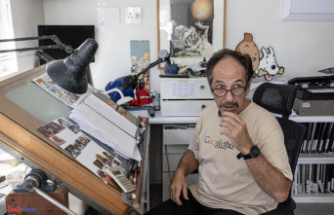The vehicles of driving schools that have systems of driving assistance such as the 'Start-Stop', the help system output in the slope or the reverse camera, can be used in the practical examinations of the Directorate General of Traffic (DGT) from this Monday, 16 September.
"Is the adaptation of the new technology to the driving test, systems that already incorporate most of the vehicles as display of alignment or that do not swing into any ramp," he assured to Europa Press, the president of Motorists European Partners, Mario Arnaldo.
In particular, as reported by the DGT, during the control tests of skills and behaviour may be used in the following systems of driving assistance: 'Start-Stop'; help system output in slope; automatic activation of lighting, and windshield wipers; emergency braking urban and inter-urban (AEB); cross-traffic alert (RCTA); reversing camera, 360-degree views and parking sensors; a detection system of fatigue; or notice of emergency braking (EBD).
The 'Start-Stop' is a system boot of the car, which shuts off the engine when you are at idle and back on when sepisa the clutch, and the help system output in slope, also known as ' Hill Holder ', is a device that has a sensor that detects the angle of inclination in which is located the car, preventing the car from rolling backward when you lift your foot off the brake.
with Respect to the automatic activation of lighting and windshield wipers, the DGT has specified that, as in the present, the examiner may ask the applicant in the pre-checks that you locate both handles, applying the criteria of existing rating.
15 September has entered into force a new instruction, #DGT, that allows to arrange the vehicles used for the conduct of practical examination conduct of certain advanced systems of driving assistance #ADAS. https://t.co/1RI0CEjNhPpic.twitter.com/AlrBsoBPdY
— Dir. General Traffic (@DGTes) September 16, 2019
"If, during the development of the test any of the controls mentioned above, or both, is activated, will not apply any penalty ", has pointed out Traffic.
in Addition, if during the development of the test the system of automatic activation of lighting is not activated, being necessary due to the lack of visibility, the applicant "will need to do it manually". If you fail to do so, the examiner will qualify as a misdemeanour and once qualified you will see that the active and, do not, will qualify as a disqualifying fault.
This same criterion will also be applied by the examiner in the when by reason of lack of visibility does not automatically activate the windshield wipers.
On the emergency braking urban and inter-urban (AEB), the DGT has indicated that the examiner will assess the situation as if it were an intervention of the teacher, marking it accordingly.
Likewise, before the activation of the cross-traffic alert (RCTA), the examiner will assess the situation, taking into account whether or not there is visibility. If there is no visibility and to be active in the system, does not qualify as long as the maneuver is performed in conditions of safety.
If having visibility the applicant perform the maneuver, and the system is activated by the risk of collision, it will qualify the lack with the rating of poor if there is obstruction to other users; or with the knockout by manoeuvre or action evasion of other users.
The DGT will also allow from this Monday, the use of the reverse camera and 360 degrees and/or the parking sensors, although he adds that it is not allowed to the system parking aid total, in which the vehicle takes control for itself and requires no intervention by the driver at the controls.
finally, Traffic has been explained that the detection system of fatigue to alert the driver in situations in which to lose concentration behind the wheel, either by fatigue or sleep, to avoid potential accidents; and that the notice of emergency braking (EBD) helps drivers to detect when the vehicle ahead is performing emergency braking.
AdaptaciómThe president of Motorists European Partners has confirmed to Europa Press that it is "a statement" of the DGT and not "a regulatory amendment or statutory". "What they seek is to adapt technological innovations to a vehicle without any type of restriction," he explained.
starting tomorrow, as has assured the president of Motorists European Partners, Traffic incorporates an instruction "to allow technological innovations that the majority of the cars include from series".
Among those technological innovations, Arnaldo has emphasized "that not stalling the vehicle, you have advertisers approach or driving aids for parking". "It does not mean a change in the law, but that is a statement of the DGT to their Headquarters," he explained.
finally, the expert has stressed that this new statement will not have any restriction on the card as it does, for example, test your knowledge with an automatic car, that restricts the driver to driving only this type of vehicles.
Date Of Update: 17 September 2019, 01:01











